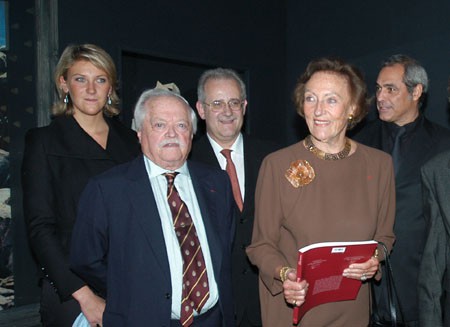27 September, 2004, 7-30pm: the Musée Jacquemart-André, just before opening the doors on an exhibition soon to become the talk of the town!
For the first time in Paris, the Fondation Napoléon present more than 200 pieces from it prestigious collection of paintings, objets d'art, furniture and memorabilia from the family of Napoleon I. The 'rump' of the collection (originally donated in 1986) was put together by Martial Lapeyre, an industrialist Napoleon enthusiast, but this has been significantly enriched as a result of the careful acquisition policy put in place by the Fondation Napoléon. By sticking closely to the spirit of Martial Lapeyre collection, the Fondation Napoléon, registered charity in 1987, has added to the wonderful pieces inherited an ensemble of masterpieces of French national heritage.
The commissaires of the exhibition were Bernard Chevallier, Director of the Musée Malmaison, Conservateur général du Patrimoine and trustee at the Fondation Napoléon and Nicolas Sainte Fare Garnot, curator of the Musée Jacquemart-André. They were assisted by Karine Huguenaud, curator of the Fondation Napoléon's collection. The scenography was executed by Michel Albertini. The exhibition is accompanied by a detailed catalogue.
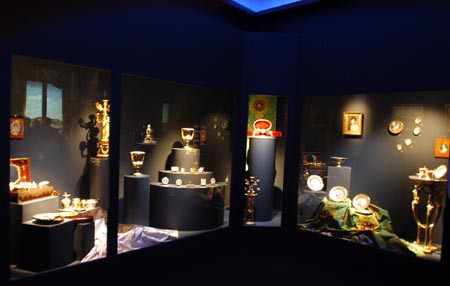 From the sparkle of the sumptuous imperial court to the life of a humble exile, it is the extraordinary trajectory of Napoleon's life which is the theme of this unique collection.
From the sparkle of the sumptuous imperial court to the life of a humble exile, it is the extraordinary trajectory of Napoleon's life which is the theme of this unique collection.
The Treasures of the Fondation Napoléon exhibition is a journey into brilliant intimacy of imperial society, the daily lives of an elite which surrounded themselves with works by the very best artists and artisans, all of them official suppliers to the imperial court. There is the luxurious travel nécessaire, which police chief Joseph Fouché commissioned from the goldsmith Martin-Guillaume Biennais as a wedding present to give to his second wife in 1815. There are also some remarkable porcelain masterpieces, such as 19 dessert plates from the emperor's personal service known as the “Headquarters Service”.
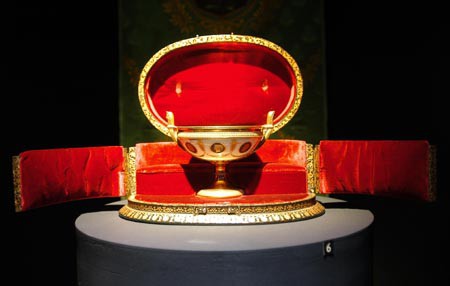 Exquisite every day objects, sumptuous jewellery boxes, snuff boxes, pocket watches, decorated china pieces from the Sèvres, Dihl and Guérhard, and Nast manufactories reveal the opulence of the domestic life of the upper echelons. Indeed, the only way the lower classes can burst into the drawings rooms of the period is via the delightful genre paintings of Demarne and Swebach-Desfontaines, with their charming and picturesque country scenes, fêtes and markets. Of particular interest are two pieces of furniture, a commode and a bureau, made by the cabinet-maker Levasseur in circa 1806-1807 for the 'Prince de la Paix', Manuel Godoy, Minister of king Charles IV of Spain.
Exquisite every day objects, sumptuous jewellery boxes, snuff boxes, pocket watches, decorated china pieces from the Sèvres, Dihl and Guérhard, and Nast manufactories reveal the opulence of the domestic life of the upper echelons. Indeed, the only way the lower classes can burst into the drawings rooms of the period is via the delightful genre paintings of Demarne and Swebach-Desfontaines, with their charming and picturesque country scenes, fêtes and markets. Of particular interest are two pieces of furniture, a commode and a bureau, made by the cabinet-maker Levasseur in circa 1806-1807 for the 'Prince de la Paix', Manuel Godoy, Minister of king Charles IV of Spain.
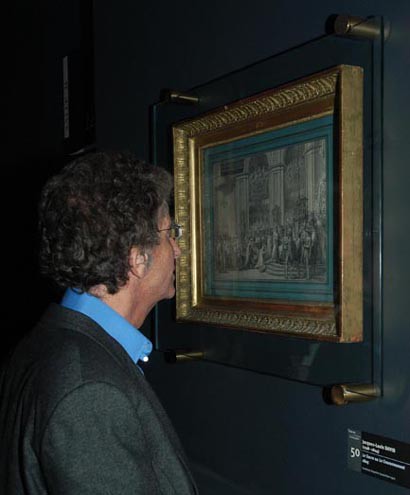 The coronation of Napoleon is at the heart of this exhibition. And here stands the exceedingly rare and largely unknown 'Study for the coronation of the emperor Napoleon and the Empress Josephine, by David, a preparatory work for the painting of the gigantic 'Sacre'. Aside from its uniqueness, this study reveals the development of the painting. It was made in 1805 and shows David's initial intentions, a representation of Napoleon crowning himself, an emphatic gesture which was considered provocative before the pope – despite the fact that the ceremonial had been agreed with the pontiff previously. Only later did the painter change the scene to Napoleon, “master and sovereign”,crowning Josephine. Through this study one can see the many changes which David made before he reached his final painting, notable amongst which is inclusion of Madame Mère (absent in the study, and indeed absent at the ceremony itself!).
The coronation of Napoleon is at the heart of this exhibition. And here stands the exceedingly rare and largely unknown 'Study for the coronation of the emperor Napoleon and the Empress Josephine, by David, a preparatory work for the painting of the gigantic 'Sacre'. Aside from its uniqueness, this study reveals the development of the painting. It was made in 1805 and shows David's initial intentions, a representation of Napoleon crowning himself, an emphatic gesture which was considered provocative before the pope – despite the fact that the ceremonial had been agreed with the pontiff previously. Only later did the painter change the scene to Napoleon, “master and sovereign”,crowning Josephine. Through this study one can see the many changes which David made before he reached his final painting, notable amongst which is inclusion of Madame Mère (absent in the study, and indeed absent at the ceremony itself!).
The key stages of that decisive day, 2 December, 1804, can be seen in the eight fabulous watercolours by Pierre-François-Léonard Fontaine, the architect alongside Charles Percier in charge of the decorative work for ceremony in the cathedral of Notre-Dame.
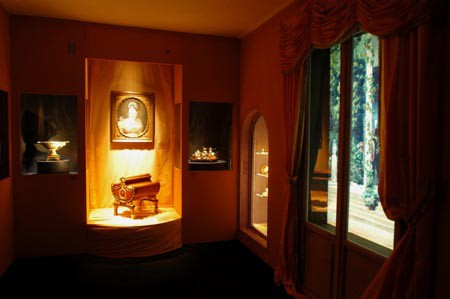 A towering figure in the fashion world of the later 18th early 19th centuries, the empress Josephine was a key player who orchestrated fashions trends according to her taste. The exhibition highlight Josephin's extreme refinement in such matetrs, including notably some masterpieces of cabinetmaking, gold work, porcelain and jewellery. The paper press in which the empress liked to keep her letters and personal papers, the tea and coffee service, and the remarkable punch bowl, all the work of the Biennais, bear ample witness to extreme luxury of life at Malmaison.
A towering figure in the fashion world of the later 18th early 19th centuries, the empress Josephine was a key player who orchestrated fashions trends according to her taste. The exhibition highlight Josephin's extreme refinement in such matetrs, including notably some masterpieces of cabinetmaking, gold work, porcelain and jewellery. The paper press in which the empress liked to keep her letters and personal papers, the tea and coffee service, and the remarkable punch bowl, all the work of the Biennais, bear ample witness to extreme luxury of life at Malmaison.
Another exceptional item is the ten- (originally twent-four-) piece set of chocolate cups and pot which Napoleon had sent to Josephine on 31 october, 1811. The cups are decorated with hieroglyphics in gold and views of Egypt (in grisaille) based on the engravings by Dominique Vivant Denon for his books, Voyage dans la Basse et Haute Égypte (Journey into lower and upper Egypt).
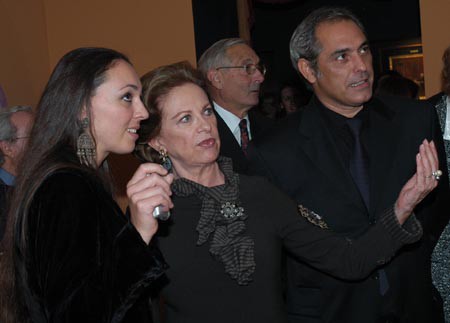 The last part of the exhibition is perhaps the most intimate, being remarkable memorabilia dating from the Saint Helena period, particularly moving in their simplicity (clothing, a rare autograph manuscript of English lessons given to Napoleon by Las Cases, reliquaries) and other remarkable memorabilia which bear in them the traces of the glorious past upon which Napoleon in exile never ceased to reflect: a splendid hunting gun, the last present offered on 14 July, 1815, just before handing himself over to the British, and his dental dentaire, which reveals the extreme attention which Napoleon paid to dental care.
The last part of the exhibition is perhaps the most intimate, being remarkable memorabilia dating from the Saint Helena period, particularly moving in their simplicity (clothing, a rare autograph manuscript of English lessons given to Napoleon by Las Cases, reliquaries) and other remarkable memorabilia which bear in them the traces of the glorious past upon which Napoleon in exile never ceased to reflect: a splendid hunting gun, the last present offered on 14 July, 1815, just before handing himself over to the British, and his dental dentaire, which reveals the extreme attention which Napoleon paid to dental care.
Paris, 27 September, 2004


